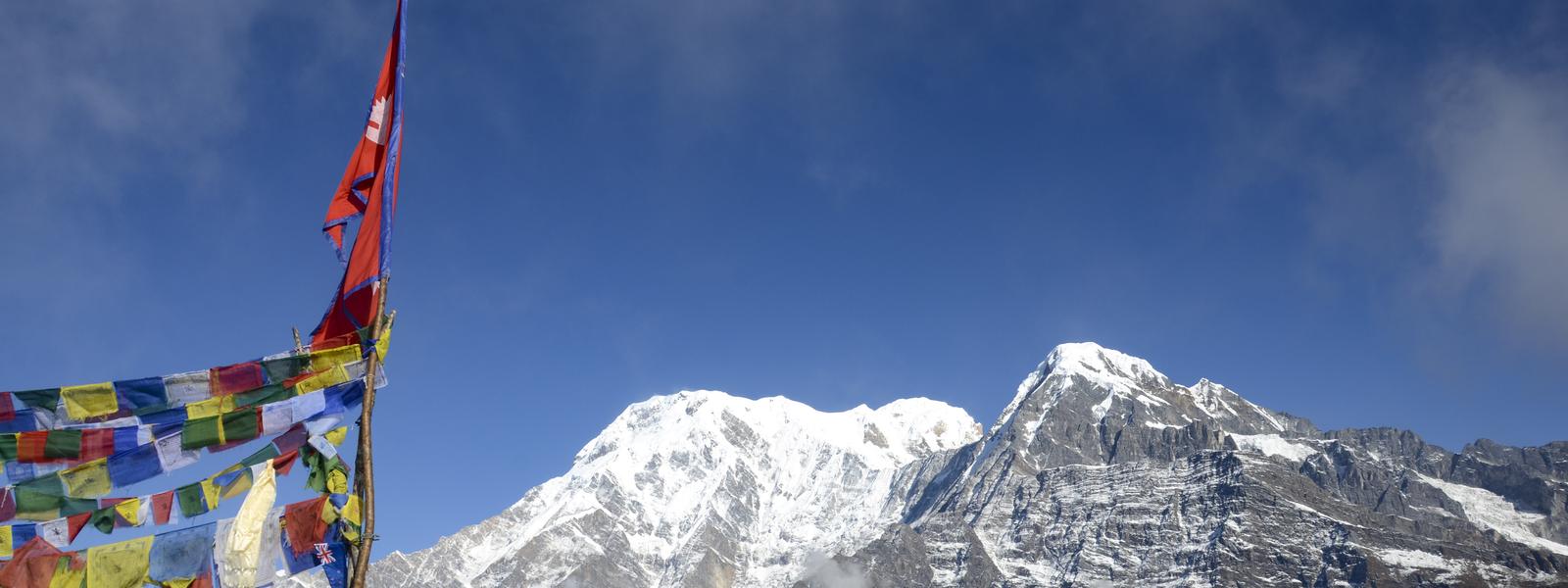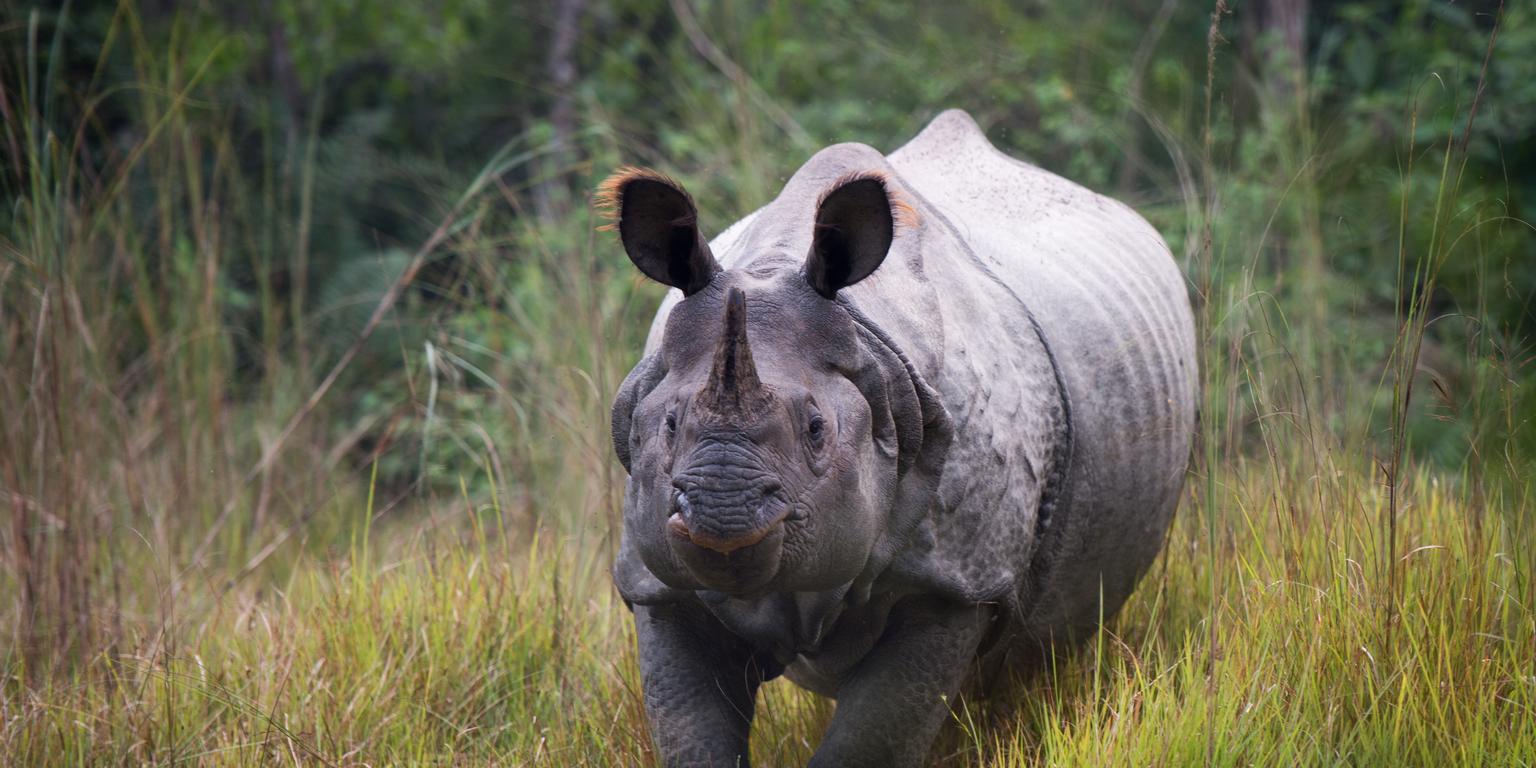When is the best time to visit Nepal?
The best time to visit Nepal is during Autumn with dry days, clear blue skies and great trekking conditions. Spring is also popular as the temperatures begin to rise, and the countryside looks even more spectacular.
Nepal weather & when to go
Pick a month below
Weather seasons are becoming less predictable but peak visitor months remain more certain.
Unfollow the herd - avoid the peak months to enjoy fewer crowds, better availability, often lusher countryside and help to spread the economic benefits of tourism.
Weather overview
Nepal monsoon season
Nepal's annual monsoon takes place between June and August. Fat rain clouds bubble up over the sea south of India and sweep across the country where they collide with the cooler air of the Himalayas, dropping their rain in torrential fashion. Most parts of the country experience sudden sharp downpours, although some mountainous areas remain pretty dry year-round, sheltered from the rain by the mighty Himalayas. The Upper Mustang region and sections of the Annapurna circuit, in particular Jomsom, in the rain shadow gets just 30mm of rain mid-monsoon in August, while Pokhara is drenched in 850mm. Even in peak monsoon season it rarely rains for long periods, and more intrepid visitors will enjoy having the cultural sights and drier trekking trails almost to themselves.
Nepal seasons and climate
Seasons in Nepal can be divided roughly into four seasons, although (as with weather conditions worldwide) these seasons are increasingly blurred. From the lowlands close to the Indian border to the 8,850m peak of Mount Everest, Nepal's climate is hugely altitude dependent. The landscape divides into three quite distinct zones. The Terai zone, located in the south, runs along the border with India, with some areas virtually at sea level. A belt of often humid, jungle and farmland, the temperature in the Terai, for example in Janakpur, can often hit 35°C. It's home to two of the country's most impressive national parks, Chitwan and Bardia, both of which are home to the rare One-Horned Rhino, and iridescently colourful birdlife.
The country’s heartland - Pahar - is a wide stretch of rolling foothills and valleys, where villages perch on the hilltops and bright green paddy fields step down the contours. The Kathmandu Valley is located within this area. Crammed with spectacular ancient cities and villages trapped in time, it's a treasure trove of cultural delights, buzzing markets and streets packed with colour and noise. Temperatures here tend to be pleasantly warm year-round, perfect for exploring, though you’ll need a fleece in the evenings and early mornings during winter months.
At the northern reach of the country, bordering Tibet and rising to exceptionally high altitude, there's the Himalaya mountain range. It's a wildly beautiful panorama of jagged snow-capped mountains, glacial lakes and flower-strewn valleys. No matter where you are in Nepal, on a clear day those lofty peaks loom above everything. In this region, places like Namche Bazaar, which sits at an altitude of 3,450m, experience temperatures of -7°C at night.
Winter in Nepal
Winter occurs from late November to February and is typically rain-free and clear. High altitude areas above 3,000 metres will be snowy and very cold indeed with night time temperatures of -10°C not uncommon. Whilst you won't want to venture towards Everest Base Camp, lower altitude treks are quite feasible at this time of year if you come properly prepared for the chill. Even in the Kathmandu valley and the flat plains it gets cold at night with temperatures hovering around 3°C so you should pack a warm fleece for the evenings. Winter is low season for tourists and a great time of year to visit places like Pokhara and the national parks on the plains.
Spring in Nepal
From March onwards spring makes its appearance, the temperatures climb and the flowers on the hillsides burst into bloom. You'll see vast swathes of pink and red rhododendrons in particular. Spring is a popular time of year to visit Nepal. Long grasses in the national parks have been cut back so visibility for rhino spotting is excellent; trekking conditions are perfect, with daylight hours lasting longer into the evening, and so tea houses and treks at higher altitude open up again. The only downside is the haze that often swathes the peaks at this time of year.
Summer in Nepal
Summer brings the monsoon months of June, July and August with the rains really hitting their peak during August. Flash floods are not uncommon, washing away roads and making some journeys problematic. Internal flights are often disrupted by low-level cloud. It rains daily, though often only for a couple of hours and usually overnight, leaving mornings fresh and bright at first. If you come prepared (pack wet weather gear), and rise early to make the most of the mornings, then a visit to Nepal during summer still has much to offer, especially for cultural pursuits. Daytime temperatures are a warm but not unpleasant 27°C. Trekking isn't totally off the agenda, with certain areas of the mountains tucked in the Himalayan rain shadow. If you venture to Manag, Mustang or Dolpo you'll have many trails to yourself.
Autumn in Nepal
By mid-September the rains have abated and autumn is well on the way. Visibility at this time of year is exceptional as the smog and haze have been washed away by the monsoon. It's the most popular time of year to visit Nepal with conditions ideal for trekking, wildlife viewing and cultural exploration alike. October and November are particularly good months if you want to see Nepalese culture at its most vibrant as two of the most important festivals - Dasain and Tihar - are celebrated at this time. Expect street parades, decorated houses and temples, dancing and singing long into the night.

